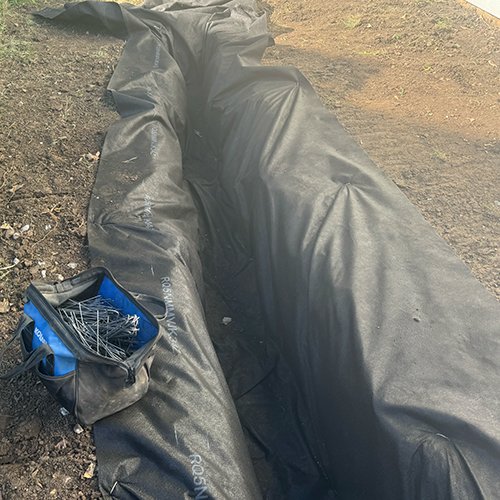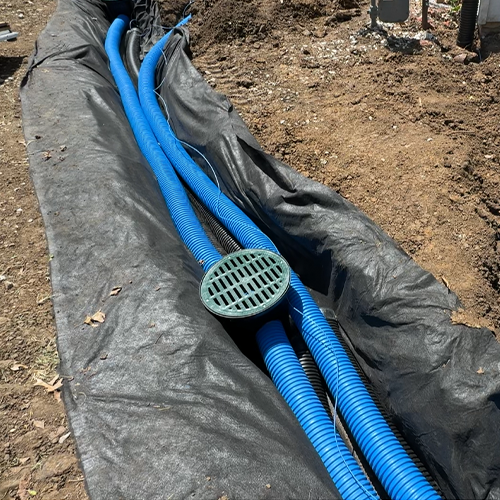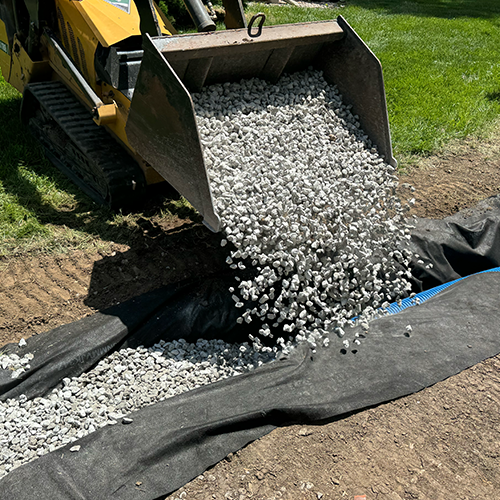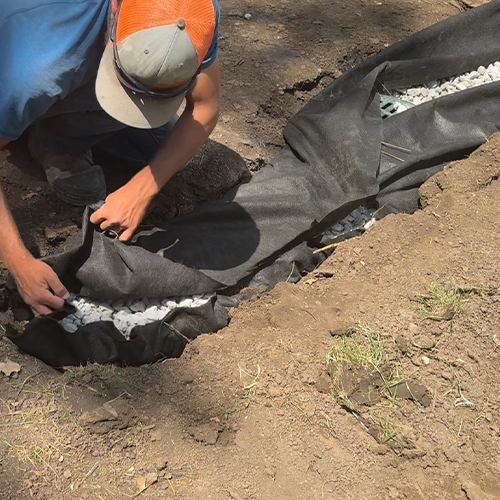Why This Matters
French drains are the backbone of effective drainage systems, collecting groundwater and surface infiltration to prevent foundation issues and landscape flooding.
Double-check Utility Marking
Safety is the top priority before any excavation work begins.
- Make sure 811 has been called and all public utilities are marked and flagged before beginning any excavation
Excavate the Trench
Proper excavation creates the foundation for effective drainage.
- Follow the excavation procedures to dig a trench with at least a 1% slope
- The bottom of the trench should be flat and smoothed out with no humps or dips
- If catch basins will be installed, dig an extra 4–6 inches of width where each basin will go
Lay Filter Fabric
Filter fabric prevents soil infiltration while allowing water flow.
- Place filter fabric along the entire trench and secure it with landscape pins
- Keep the trench bottom flat and even while placing the fabric

Install Pipe
Proper pipe placement ensures optimal water collection and flow.
- Place the perforated pipe at the very bottom of the trench
- Do not place catch basin or downspout discharge lines into the French drain pipe
- Add tracer wire along the trench
- All pipe connections should be snug and secure
- In some systems, two black perforated pipes (for the French drain) are placed beneath two blue solid pipes (for catch basins and downspouts)

Add Gravel
Clean gravel provides the filtration medium for water collection.
- Fill the trench with clean gravel until it is 4-6" below the final soil level
- If the drain is meant to be an "open French drain", fill the gravel to the top

Wrap with Fabric
Complete fabric wrapping prevents soil contamination of the gravel bed.
- Fold the remaining filter fabric over the top of the gravel
- Trim any excess that overlaps more than 2 inches
- Trim around any catch basin openings
- Pin the fabric in place

Backfill
Final backfilling restores the landscape while protecting the drainage system.
- Add 4-6" of soil over the fabric to match the surrounding grade
- Follow the general backfill procedure to ensure compaction and a smooth yard finish